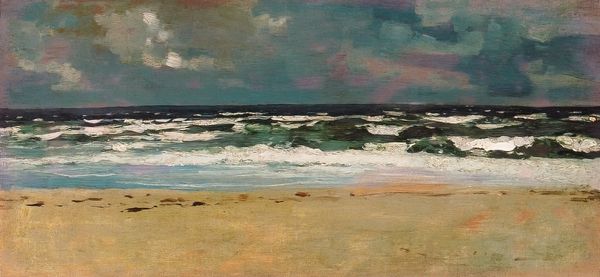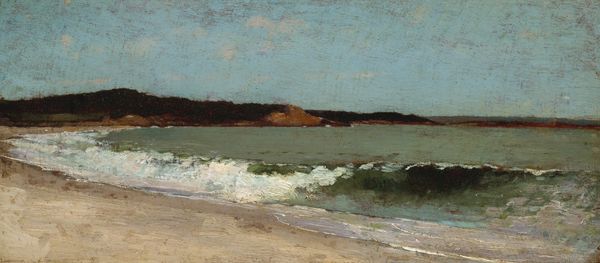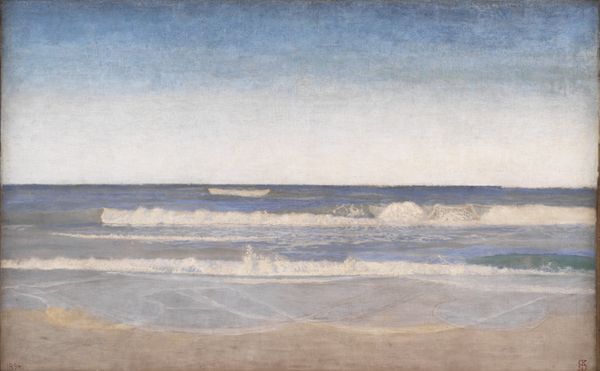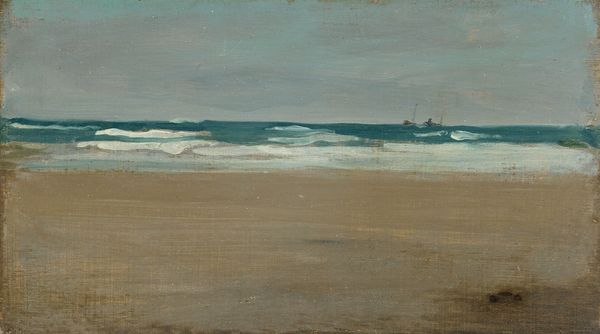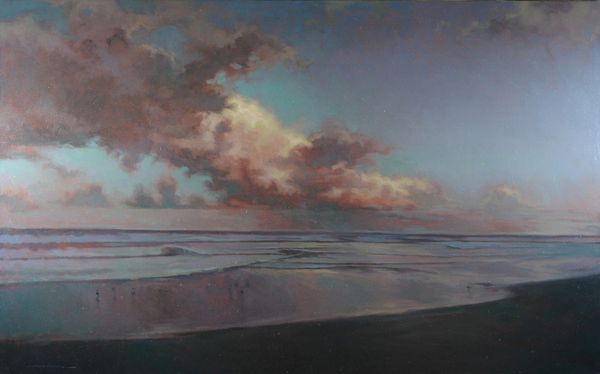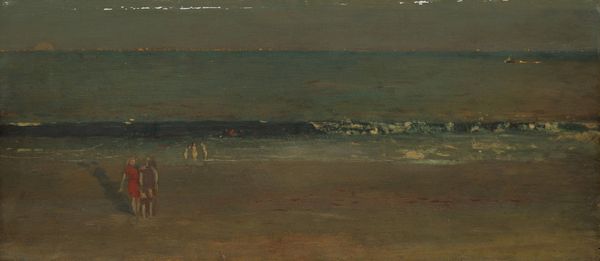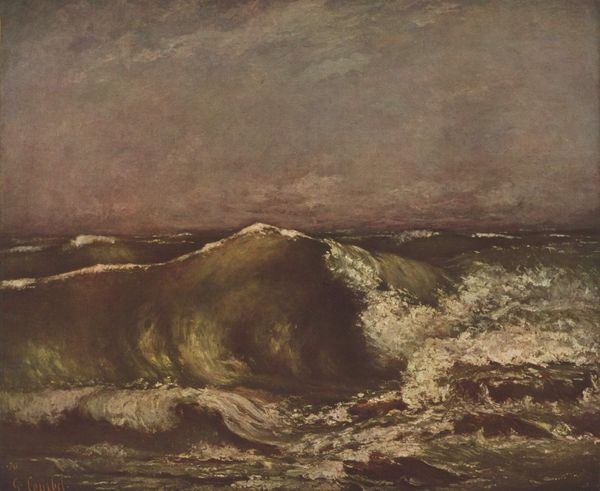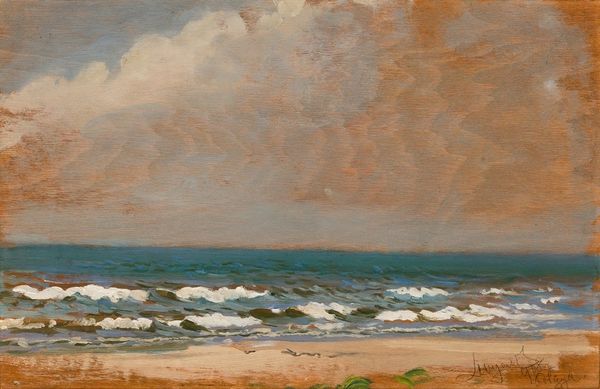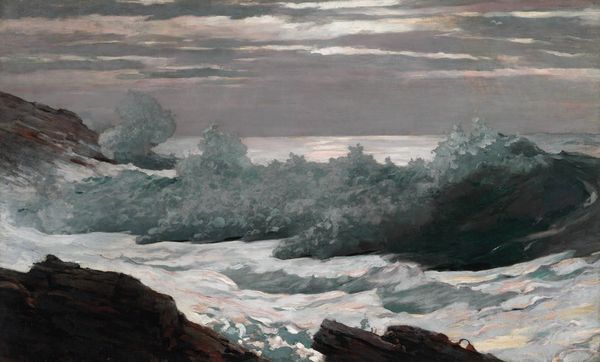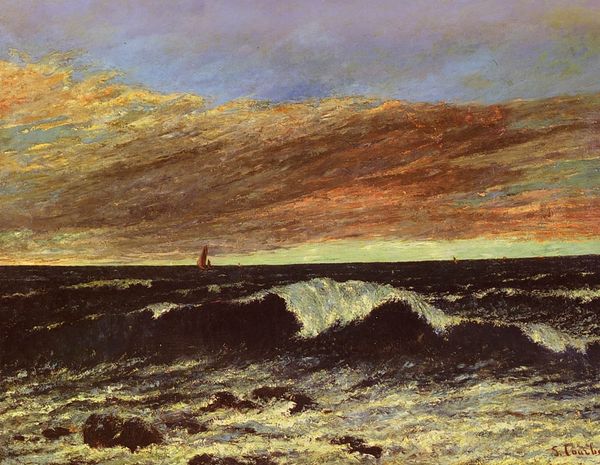
Copyright: Public domain
Curator: Here we have Antonio Carneiro’s “Onda,” an oil painting created en plein air in 1912. It's an example of how the Impressionist style found expression even in Portugal. Editor: Oh, instantly I’m swept up in the quiet drama of it. The colors are so muted, like a memory fading at the edges. The sand looks almost…edible, like pink cotton candy! Curator: Interesting, given that Impressionism sought to capture the fleeting moment, often emphasizing the ephemeral nature of light and atmosphere. Consider how Carneiro focuses our attention on a singular wave— “onda” is, after all, Portuguese for "wave." Editor: And that wave is doing *everything*. It’s frothing, it's churning, it's threatening to consume that candy floss shore… but it doesn’t, does it? It's held back, almost hesitant. It's a visual representation of ambivalence. Curator: Right. There's tension. Carneiro employs visible brushstrokes, capturing the movement of the water and the subtle play of light, not only on the crest of the wave but along the distant horizon line, adding depth. Editor: It almost feels spiritual. I imagine myself standing there on that beach, feeling insignificant against the backdrop of the ocean’s vastness. You can almost smell the salt air, can't you? There is almost something sinister in this restrained expression. The subdued pastel tones that are about to clash in violence... It is masterfully suggestive. Curator: Precisely! These coastal landscapes are, of course, shaped by political and social factors, economic uses, colonial pasts… but what stands out here is Carneiro's willingness to engage with a scene historically linked to empire and domination but interpreted through a subjective lens of quiet, human experience. Editor: Looking at it now, knowing what I know...it isn't "cotton candy," but something closer to blood, dried by the sun. What a revelation! It goes from simple to utterly devastating, if you allow it. Thanks to this picture, I'm suddenly very uncomfortable. Curator: Indeed. It is that potential to constantly revise our perceptions based on historical and social contexts that enriches the study of art. Editor: Yes! The push and pull in both the painter's hand and within my own heart leaves me grateful and troubled, all at once. Beautiful!
Comments
No comments
Be the first to comment and join the conversation on the ultimate creative platform.
